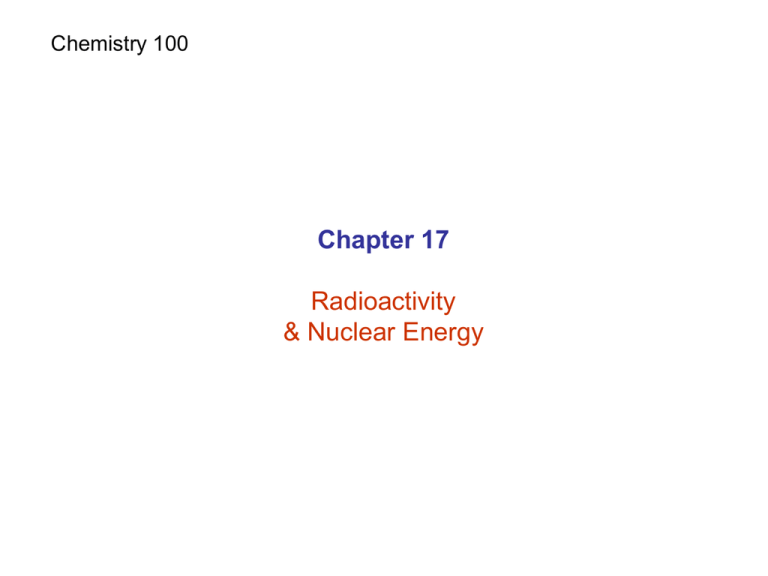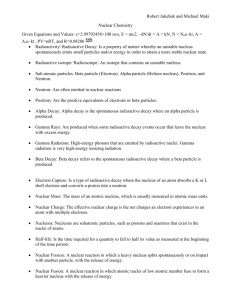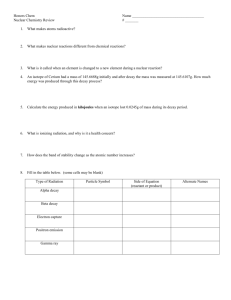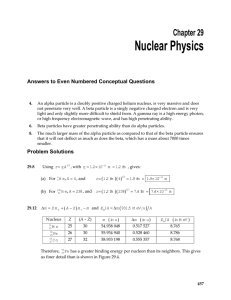Chapter 17 Radioactivity & Nuclear Energy Chemistry 100
advertisement

Chemistry 100 Chapter 17 Radioactivity & Nuclear Energy Review Mass number (A): Protons + Neutrons Atomic number (Z): Protons Mass number A Atomic number Z X Isotopes: atoms with the same number of protons and electrons but different numbers of neutrons. different mass number Radioactive Decay Radioactive: nucleus which spontaneously decomposes forming a different nucleus and producing one or more particles. Nuclear Equation: shows the radioactive decomposition of an element. β Particle Mass # and Atomic # must be conserved. Types of Radioactive Decay Alpha (α) particle Beta (β) particle Gamma (γ) ray Positron particle Electron Capture Alpha (α) Particle • Alpha particle – helium nucleus ( ) Examples: • Net effect is loss of 4 in mass number and loss of 2 in atomic number. Mainly occurs in elements of atomic number 80 or higher. Beta (β) Particle • Beta particle – electron ( ) Examples: • Net effect is to change a neutron into a proton. Gamma (γ) Ray • Gamma ray – high energy photon of light ( ) No charge, No mass. Example: • Net effect is no change in mass number or atomic number. Positron Particle • Positron – particle with same mass as an electron but with a positive charge ( ). Example: • Net effect is to change a proton into a neutron. Electron Capture • Process in which one of the inner-orbital electrons is captured by the nucleus to change a proton into a neutron. Example: Types of Radioactive Decay Decay Series Sometimes, a decay series occurs until a stable nuclide is formed. Nuclear Transformation • Change of one element to another. • Bombard elements with particles. Examples: Rutherford 1919: Curie 1933: Transuranium Elements • Elements with atomic numbers greater than 92 (uranium) which have been synthesized by neutron or positive-ion bombardment. Half-Life Half-life (t1/2): the time it takes for one half of any sample of radioactive material to decay. It does not matter how big or small a sample is. Half-Life Example: 10 mg of 131 53 I t1/2 of Iodine-131 = 8 days How much will be left over after 32 days? 10 mg × 1/2 × 1/2 × 1/2 × 1/2 = 0.625 mg 32 days (4 half-lives) Radiocarbon Dating (Carbon-14 Dating) Based on the radioactivity of carbon-14. • Used to date wood and artifacts Radiotracers • Radioactive nuclides that can be introduced into organisms and traced for diagnostic purposes. Nuclear Energy Two types of nuclear processes can produce energy: Fusion: Combining two light nuclei to form a heavier nucleus. Fission: Splitting a heavy nucleus into two nuclei with smaller mass numbers. Effect of Radiation Least penetration power Alpha: most massive and most highly charge Lowest energy





